 |
 |
 |
| |
The effect of semaglutide on liver enzymes in subjects with obesity and elevated alanine aminotransferase: data from a randomized phase 2 trial
|
| |
| |
---------------------------------
Semaglutide is a GLP-1 analog and functions as a GLP-1 agonist.[14]
Ozempic® (semaglutide injection) is a once-weekly non-insulin medicine.....
Semaglutide (USAN; trade name Ozempic) is a pharmaceutical drug developed by Danish company Novo Nordisk for the treatment of type 2 diabetes.[1][2] It is marketed by the name Ozempic. As a glucagon-like peptide-1 receptor agonist, it lowers the blood sugar level by increasing the production of insulin. It was discovered in 2012,[3] by a team of researchers at Novo Nordisk as a longer-acting alternative to liraglutide.[4] Clinical trials were started in 2015, and phase 3 was completed in 2016.[5] Researchers at the University of Leeds and Novo Nordisk reported in 2017 that it can also be used for the treatment of obesity.[6] It reduces hunger, food craving and body fat.[7] FDA approval was applied in December 2016, and in October 2017 FDA Advisory Committee voted 16-0 in favour.[8] On December 5, 2017, semaglutide was approved by the US FDA. It can be used as both injection-type or oral-type drug.[9] The marketing authorization in EU was granted on 8 February 2018.[10] It is still under review by regulatory authorities in Japan, pending approval.[11] https://en.wikipedia.org/wiki/Semaglutide
-------------------------------------
Reported by Jules Levin
AASLD 2018 Nov 9-13 SF
Philip N Newsome1,2, Stephen A Harrison3, Søren Rasmussen4,
Tea Monk Fries4, Luc Van Gaal5
1National Institute for Health Research Birmingham Biomedical Research Centre and Liver Unit at University Hospitals Birmingham NHS Foundation Trust, Birmingham, UK; 2Centre for Liver & GI Research, Institute of Immunology and Immunotherapy, University of Birmingham, Birmingham, UK; 3Radcliffe Dept. of Medicine, University of Oxford, Oxford, UK; 4Novo Nordisk A/S, Søborg, Denmark;
5Dept. of Endocrinology, Diabetology and Metabolism, Antwerp University Hospital, Edegem, Belgium
program abstract
Background: The glucagon-like peptide 1 analogs semaglutide and liraglutide improve glycemic control and reduce elevated liver enzymes in subjects with type 2 diabetes (T2D), and reduce body weight in subjects with or without T2D. Histologic resolution of non-alcoholic steatohepatitis has also been seen for liraglutide in subjects with or without T2D. A randomized, placebo-controlled Phase 2 trial (NCT02453711) of once-daily subcutaneous semaglutide (0.05, 0.1, 0.2, 0.3, or 0.4 mg following 4-weekly escalations) in subjects with obesity without T2D, showed mean weight losses of -6.0% (0.05 mg) to -13.8% (0.4 mg) with semaglutide vs -2.3% with placebo at week 52. The effect of semaglutide on liver enzymes in subjects with elevated baseline alanine aminotransferase (ALT) was evaluated in a post hoc subanalysis from this trial.
Methods: Baseline fibrosis was categorized by the non-alcoholic fatty liver disease (NAFLD) fibrosis score (NFS) and Fibrosis-4 (FIB-4) score. Changes in ALT were estimated at week 52 (mixed model on log-transformed data) and semaglutide-to-placebo group ratios and 95% confidence intervals (95%CI) calculated from this model for subjects with high baseline ALT (>30 U/L [male]; >19 U/L [female]).
Results: Mean (range) baseline characteristics of the 957 treated subjects (35% male) were: age 47 (18-86) years, weight 111 (70-244) kg, body mass index 39 (30-80) kg/m2, NFS -0.49 (-4.70 to 4.66), and FIB-4 0.72 (0.14-3.31); 52% (n=499) had high ALT, 18% a high NFS (>0.676), and <1% a high FIB-4 (>3.25). ALT ratios (95%CI) at week 52 in those with high baseline ALT were: 0.88 (0.76-1.01; 0.05 mg); 0.94 (0.82-1.08; 0.1 mg); 0.82 (0.71-0.95; 0.2 mg); 0.79 (0.68-0.91; 0.3 mg); and 0.82 (0.70-0.95; 0.4 mg). P values were <0.01 at doses >0.1 mg, unadjusted for multiple testing. ALT changes at week 52 were broadly comparable across weight loss categories from <2% to ≥10% of baseline weight. Normalization of high baseline ALT was seen at week 52 in 29% (17/58; 0.05 mg), 25% (15/59; 0.1 mg), 38% (19/50; 0.2 mg), 43% (23/54; 0.3 mg), and 46% (21/46; 0.4 mg) of subjects on semaglutide, vs 18% (14/76) of subjects on placebo.
Conclusion: In subjects with obesity and high ALT, semaglutide 0.2-0.4 mg daily reduced ALT to an extent that was broadly comparable across weight loss categories, and resulted in dose-related ALT normalization in up to 46% of subjects after 52 weeks. These data suggest a potential role for semaglutide in the treatment of NAFLD with elevated liver enzymes.

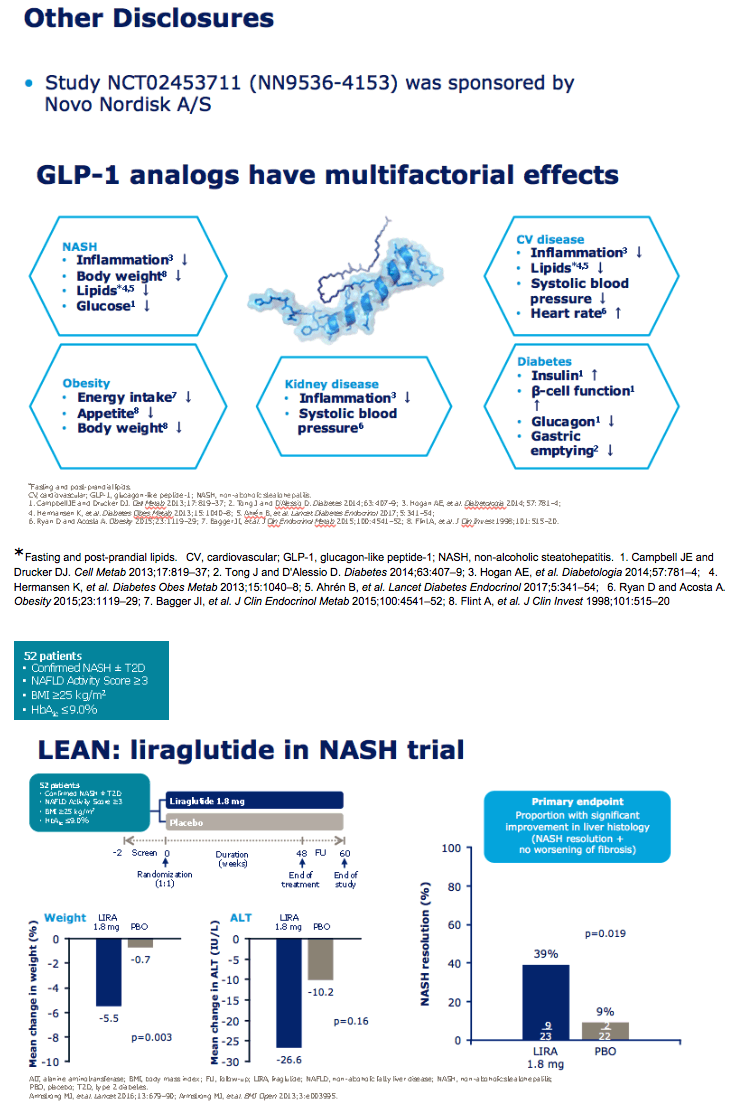
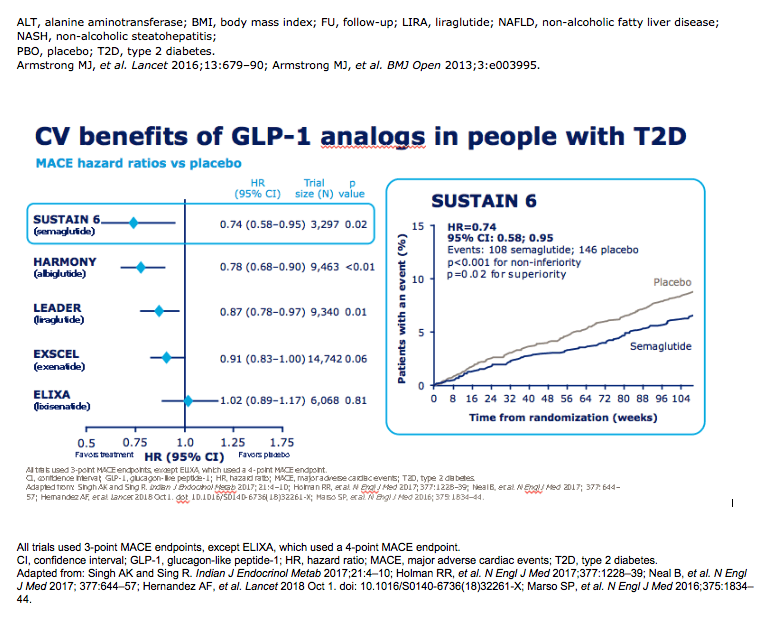
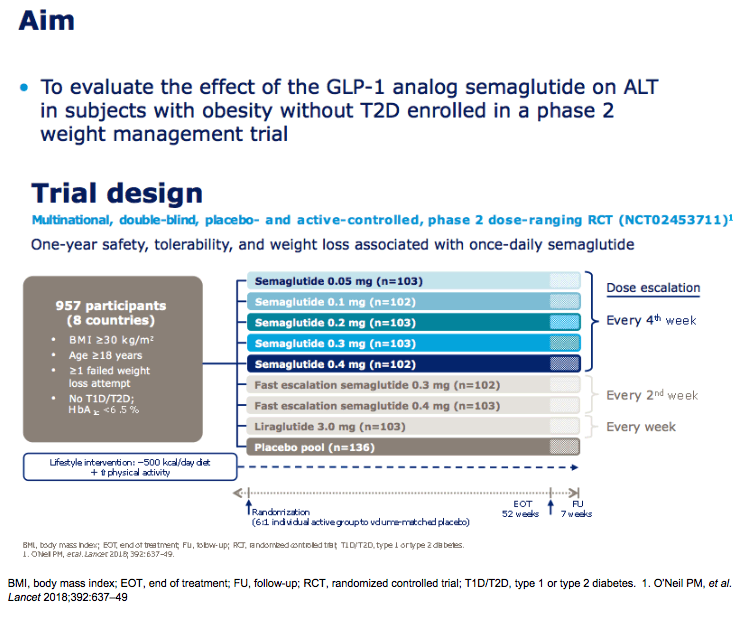
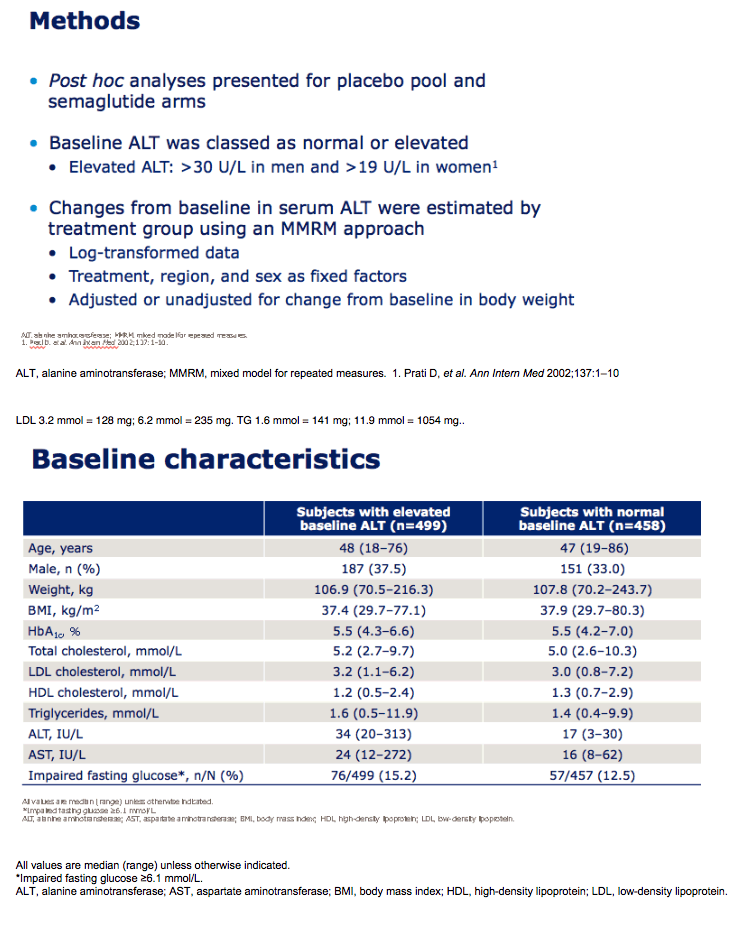


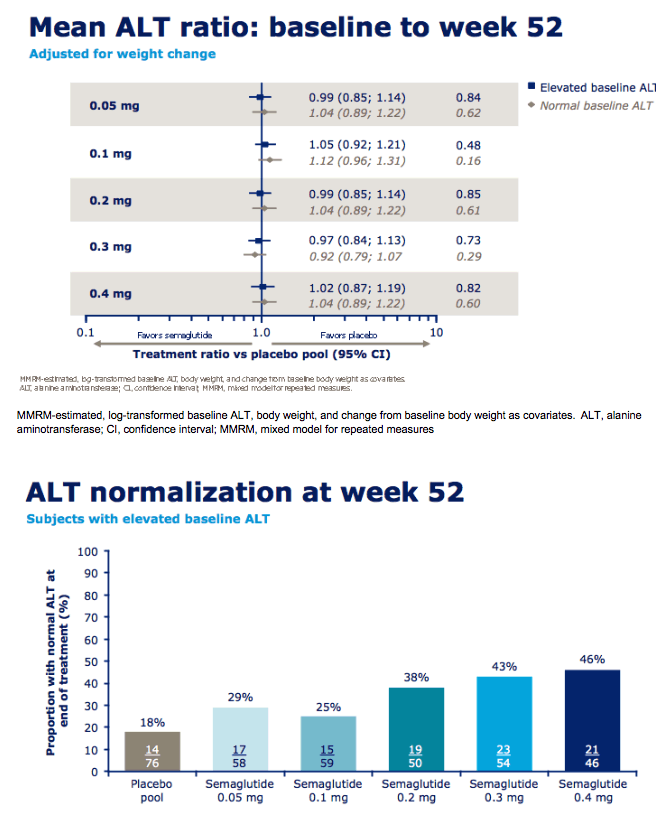
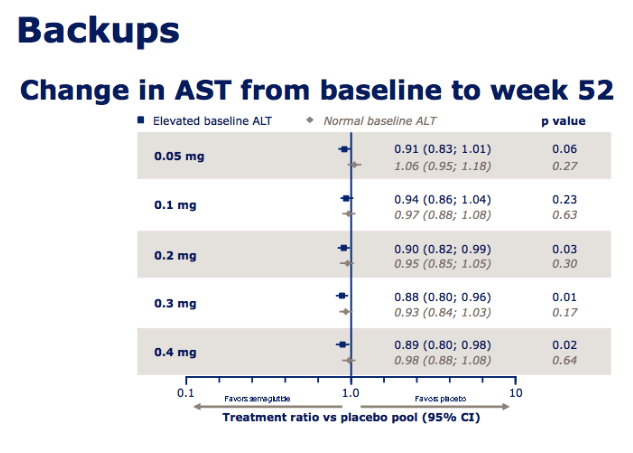
|
| |
|
 |
 |
|
|